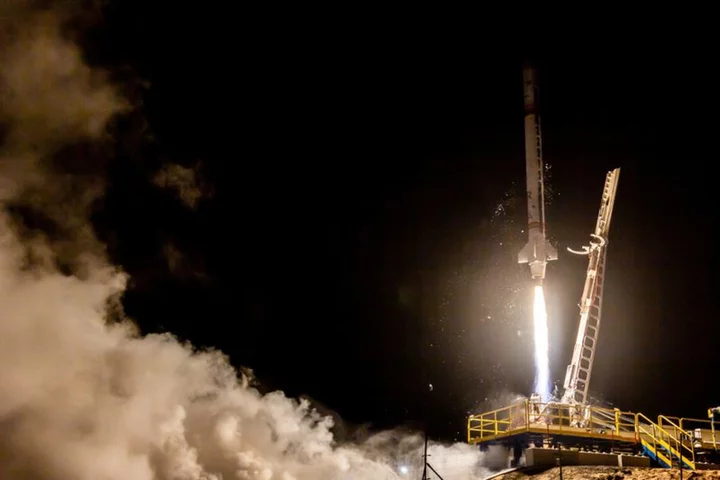
Spain's PLD Space expects first orbital launch in Q1 2026 from French Guiana
MADRID Spanish rocket company PLD Space plans a first orbital launch from French Guiana in the first quarter
2023-10-20 20:16
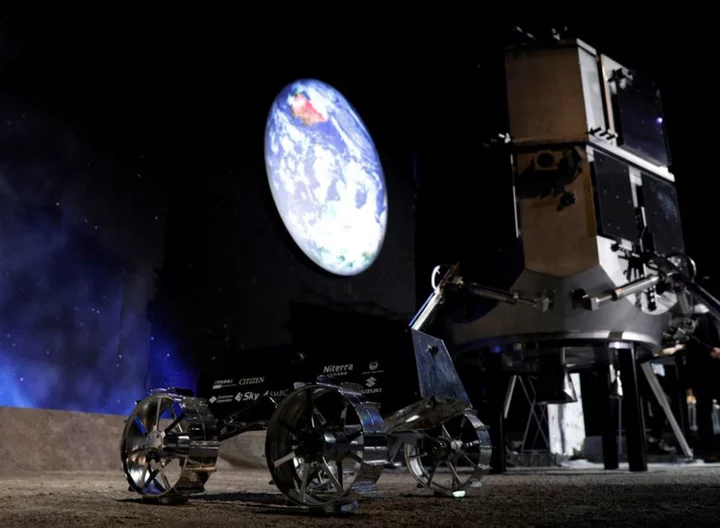
Japan gives $80 million subsidy to moon exploration startup ispace
TOKYO Japan will provide a 12 billion yen ($80 million) subsidy for moon exploration startup ispace, industry minister
2023-10-20 10:52

Scientists receive powerful ‘fast radio burst’ from the depths of the universe
The Earth has been hit by a powerful blast of energy from the very depths of the universe. The fast radio burst is the most distant of its kind of ever seen, coming from so far away that it has travelled eight billion years to get to Earth. It is also astonishingly powerful, one of the most energetic of its kind ever seen. In less than a second, it released the same energy that comes out of the Sun in more than 30 years. Fast radio bursts are intense, short bursts of energy that come from unknown but extreme activity in space. Scientists are still unsure of how they are formed, but explanations have included everything from extraterrestrial technology to neutron stars. The newly discovered burst appears to come from a small group of merging galaxies, scientists say, which helps support current theories about where they come from. But the intensity of the burst is harder to explain, which challenges our understanding of how they are actually emitted. “While we still don’t know what causes these massive bursts of energy, the paper confirms that fast radio bursts are common events in the cosmos and that we will be able to use them to detect matter between galaxies, and better understand the structure of the Universe,” said Ryan Shannon, from the Swinburne University of Technology. The blasts could be useful ways of answering some of the deepest questions about our cosmos, such as how much it actually weighs. At the moment, attempts to answer that have led to confusing results. “If we count up the amount of normal matter in the Universe — the atoms that we are all made of — we find that more than half of what should be there today is missing,” said Professor Shannon. “We think that the missing matter is hiding in the space between galaxies, but it may just be so hot and diffuse that it’s impossible to see using normal techniques. “Fast radio bursts sense this ionised material. Even in space that is nearly perfectly empty they can ‘see’ all the electrons, and that allows us to measure how much stuff is between the galaxies.” The blast was spotted last year, using a telescope in Japan. Researchers then used other telescopes to verify the find and examine it in more detail. “Using ASKAP’s array of dishes, we were able to determine precisely where the burst came from,” said Stuart Ryder, the first author on the paper. “Then we used the European Southern Observatory (ESO) Very Large Telescope (VLT) in Chile to search for the source galaxy, finding it to be older and further away than any other FRB source found to date, and likely within a small group of merging galaxies.” The findings are reported in a new paper, ‘A luminous fast radio burst that probes the Universe at redshift 1’, published in the journal Science. Read More Scientists unveil radical new ‘missing law’ to explain the universe India’s Modi declares goal to land human on Moon by 2040 Researchers reveal source of largest ever Mars quake
2023-10-20 02:20
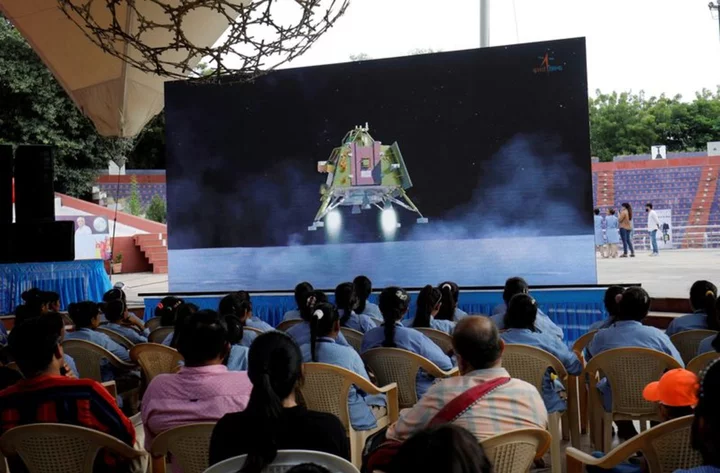
India aims to send astronaut to the moon by 2040
NEW DELHI India aims to send an astronaut to the moon by 2040, the government said on Tuesday,
2023-10-17 17:17
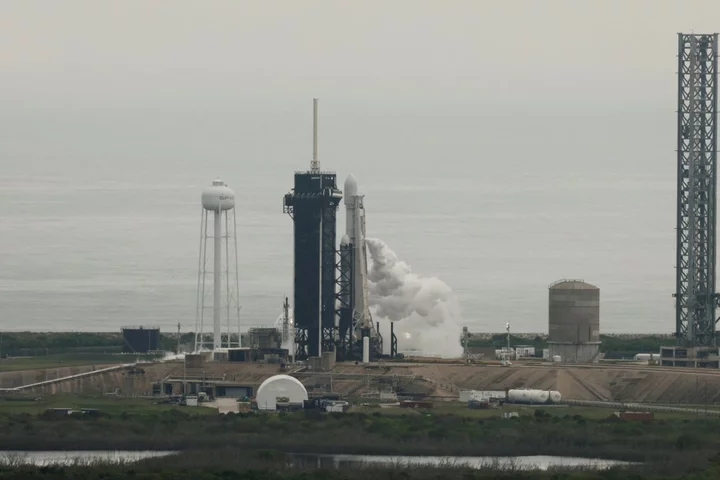
Nasa launches Psyche mission to study an ancient metal asteroid
Nasa has launched its Psyche craft into space, on a mission to study an ancient, metallic asteroid. The spacecraft set off on a six year journey, carried away by one of SpaceX’s Falcon Heavy rockets. It is aimed at an asteroid, also called Psyche, where it will arrive in 2029 and hopes to look back to the beginnings of our own Earth. Most asteroids tend to be rocky or icy, and this is the first exploration of a metal world. Scientists believe it may be the battered remains of an early planet’s core, and could shed light on the inaccessible centers of Earth and other rocky planets. SpaceX launched the spacecraft into a midmorning sky from NASA’s Kennedy Space Center. Psyche should reach the huge, potato-shaped object in 2029. After decades of visiting faraway worlds of rock, ice and gas, NASA is psyched to pursue one coated in metal. Of the nine or so metal-rich asteroids discovered so far, Psyche is the biggest, orbiting the sun in the outer portion of the main asteroid belt between Mars and Jupiter alongside millions of other space rocks. It was discovered in 1852 and named after Greek mythology’s captivating goddess of the soul. “It’s long been humans’ dream to go to the metal core of our Earth. I mean, ask Jules Verne,” said lead scientist Lindy Elkins-Tanton of Arizona State University. “The pressure is too high. The temperature is too high. The technology is impossible,” she added. “But there’s one way in our solar system that we can look at a metal core and that is by going to this asteroid.” Astronomers know from radar and other observations that the asteroid is big — about 144 miles (232 kilometers) across at its widest and 173 miles (280 kilometers) long. They believe it’s brimming with iron, nickel and other metals, and quite possibly silicates, with a dull, predominantly gray surface likely covered with fine metal grains from cosmic impacts. Otherwise, it’s a speck of light in the night sky, full of mystery until the spacecraft reaches it after traveling more than 2 billion miles (3.6 billion kilometers).Scientists envision spiky metal craters, huge metal cliffs and metal-encrusted eroded lava flows greenish-yellow from sulfur — “almost certain to be completely wrong,” according to Elkins-Tanton. It’s also possible that trace amounts of gold, silver, platinum or iridium — iron-loving elements — could be dissolved in the asteroid’s iron and nickel, she said. “There’s a very good chance that it’s going to be outside of our imaginings, and that is my fondest hope,” she said. Believed to be a planetary building block from the solar system’s formation 4.5 billion years ago, the asteroid can help answer such fundamental questions as how did life arise on Earth and what makes our planet habitable, according to Elkins-Tanton.On Earth, the planet’s iron core is responsible for the magnetic field that shields our atmosphere and enables life. Led by Arizona State University on NASA’s behalf, the $1.2 billion mission will use a roundabout route to get to the asteroid. The van-size spacecraft with solar panels big enough to fill a tennis court will swoop past Mars for a gravity boost in 2026. Three years later, it will reach the asteroid and attempt to go into orbit around it, circling as high as 440 miles (700 kilometers) and as close as 47 miles (75 kilometers) until at least 2031. The spacecraft relies on solar electric propulsion, using xenon gas-fed thrusters and their gentle blue-glowing pulses. An experimental communication system is also along for the ride, using lasers instead of radio waves in an attempt to expand the flow of data from deep space to Earth. NASA expects the test to yield more than 10 times the amount of data, enough to transmit videos from the moon or Mars one day. The spacecraft should have soared a year ago, but was held up by delays in flight software testing attributed to poor management and other issues. The revised schedule added extra travel time. So instead of arriving at the asteroid in 2026 as originally planned, the spacecraft won’t get there until 2029. That’s the same year that another NASA spacecraft — the one that just returned asteroid samples to the Utah desert — will arrive at a different space rock as it buzzes Earth. Additional reporting by Reuters Read More Watch live as Nasa launches spacecraft bound to orbit Psyche asteroid Here’s how you can see the ‘Ring of fire’ solar eclipse on Saturday Nasa opens up pieces of a distant asteroid transported back to Earth Prada to design Nasa’s next-gen space suits for Artemis astronauts 1.2 mile-high ‘dust devil’ spotted on Mars by Nasa’s Perseverance rover Rover captures one-mile-high whirlwind on Mars
2023-10-13 22:58
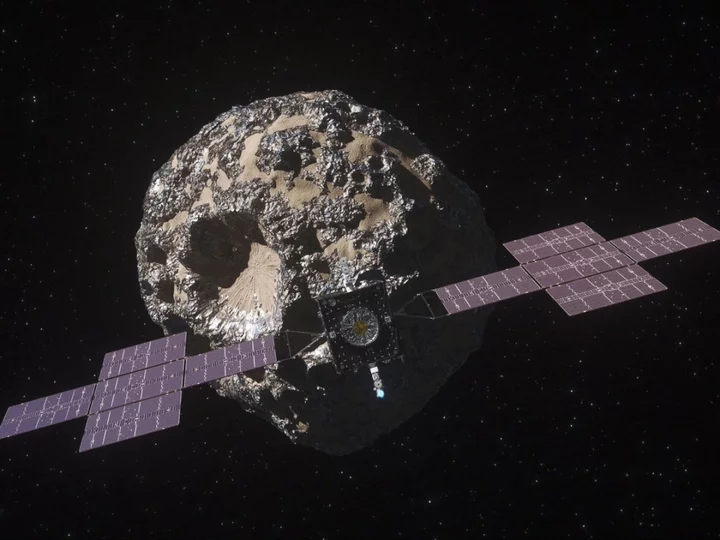
Nasa’s Psyche mission set to launch to ancient metal asteroid today: Live updates
Nasa is about to set off to a distant, metal asteroid that could tell us how planets form. On Friday, the spacecraft – currently folded in the cargo bay of a SpaceX rocket – will leave from the Kennedy Space Centre and begin a mission that will see it arrive at what is thought to be an ancient remnant of a protoplanet in 2029. Propelled by a system of solar-electric ion thrusters being used for the first time on an interplanetary mission, the spacecraft - about the size of a small van - is expected to reach its target on the outer fringes of the main asteroid belt between Mars and Jupiter nearly six years from now. It would then orbit Psyche for 26 months, scanning the asteroid with instruments built to measure the asteroid’s gravity, magnetic proprieties and composition. Psyche measures roughly 173 miles (279 km) across at its widest point. The leading hypothesis for this asteroid’s origin is that Psyche is the once-molten, long-frozen inner hulk of a baby planet torn apart by collisions with other celestial bodies at the dawn of the solar system. It orbits the sun about three times farther than Earth, even at its closest to our planet.
2023-10-13 21:53

NASA set to launch spacecraft to explore metal-rich asteroid Psyche
By Steve Gorman NASA was due on Friday to launch a spacecraft from Florida on its way to
2023-10-13 18:24

US Space Force pauses use of AI tools like ChatGPT over data security risks
WASHINGTON The U.S. Space Force has paused the use of web-based generative artificial intelligence tools like ChatGPT for
2023-10-12 02:21

Scientists watch afterglow from two huge planets crashing into each other for first time
Astronomers have seen the “afterglow” of two huge planets crashing into each other for the first time. Scientists watched as the heat and dust that were left behind from the crash swirled in front of their star, allowing them to see the aftermath of the explosion. The incident happened when two ice giant planets collided with each other, around a star like our own Sun. A blaze of light and dust resulted, which could be seen from Earth. Those effects were first spotted by an amateur astronomer social media, who noticed unusual light coming from the star. It had brightened up in infrared – getting lighter at those wavelengths for three years – and then the optical light began fading. Scientists then watched the star in an attempt to understand what was happening. They monitored for further changes at the star, named ASASSN-21qj, to see how the star’s brightness changed. “To be honest, this observation was a complete surprise to me. When we originally shared the visible light curve of this star with other astronomers, we started watching it with a network of other telescopes,” said co- lead author Matthew Kenworthy from Leiden University. “An astronomer on social media pointed out that the star brightened up in the infrared over a thousand days before the optical fading. I knew then this was an unusual event.” Their research suggested that the glow was the heat from the collision, which could be picked up by Nasa’s Neowise mission. Then the optical light began to fade when the dust covered the star, over a period of three years. “Our calculations and computer models indicate the temperature and size of the glowing material, as well as the amount of time the glow has lasted, is consistent with the collision of two ice giant exoplanets,” said co-lead author Simon Lock from the University of Bristol. The dust is then expected to star smearing out. Astronomers hope to confirm their theories by watching as that happens, since it should be visible both from Earth and with Nasa’s James Webb Space Telescope – and they might see that dust begin its journey into something else. It will be fascinating to observe further developments. Ultimately, the mass of material around the remnant may condense to form a retinue of moons that will orbit around this new planet,” said Zoe Leinhardt, from the University of Bristol, who was a co-author on the study. The research is described in a paper, ‘A planetary collision afterglow and transit of the resultant debris cloud’, published in Nature today. Read More 1.2 mile-high ‘dust devil’ spotted on Mars by Nasa’s Perseverance rover Researchers capture first-ever afterglow of huge planetary collision Earth hit by a huge solar storm that would devastate civilisation, trees show
2023-10-12 00:49
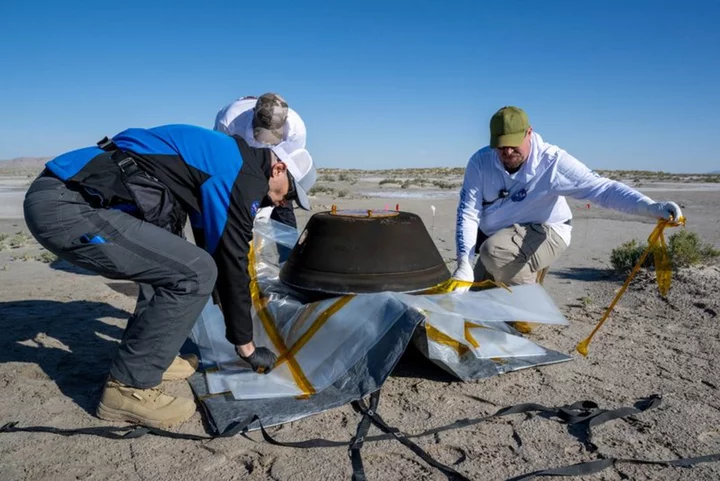
NASA to unveil first newly returned near-Earth asteroid sample
By Steve Gorman NASA was set on Wednesday to provide a first peek for the public at what
2023-10-11 18:16

Russian module on International Space Station suffers coolant leak
By Joey Roulette (Reuters) -Russia's space agency said on Monday that its multipurpose Nauka module attached to the International Space
2023-10-10 03:59
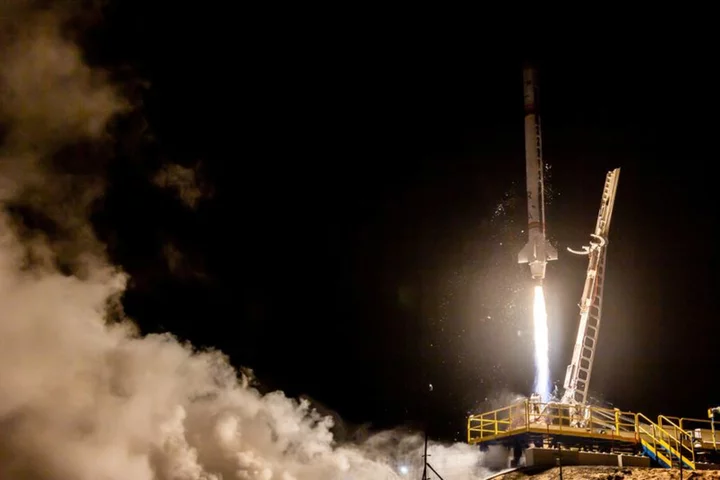
Spain's PLD Space launches private rocket in milestone for Europe
By Graham Keeley and Tim Hepher MADRID (Reuters) -Spanish company PLD Space launched its recoverable Miura-1 rocket early on Saturday
2023-10-08 00:51
